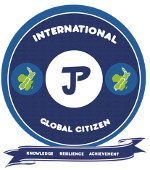Why should New Zealand support the UN Global Compact for migration?
Special Officer (SO) for Humanitarian Affairs report March 2019/ UNA NZ by Jean-Paul Bizoza
Why should New Zealand support the UN Global Compact for migration?
In the last few months Kiwis have asked if it was necessary for New Zealand to support safe, orderly and regular migration. To start with, New Zealand is a founding member of the United Nations, having taken part in 1945 in the United Nations Conference on International Organization in San Francisco. Since its formation, New Zealand has been actively engaged in the organisation. New Zealand sees the UN as a means of collective security, mainly in the South Pacific region, particularly because New Zealand is a relatively small nation and has very little control over much larger countries or significant events
Likewise, New Zealand recognizes that no single countries can deal with immigrant influx alone. For instance, a number of countries from Europe have struggled to manage the flow of migrants from northern Africa and the Middle East. New Zealand as a global citizen adhere to international human rights law and upholds UN Migration Agency (IOM) principles. That includes the rights of migrants, fight xenophobia, racism and discrimination.
It is indicated that the UN Global Compact for migration is non-legally binding, does not create legal obligations, nor it does establish customary international law. Instead, it reaffirms the sovereign right of States to determine national immigration policy and laws. i.e. States still have the sole authority to distinguish between regular and irregular migratory status.
What does United Nations Global Compact for migration mean?
The first-ever UN global agreement on a common approach to international migration namely “the New York Declaration for Refugees and Migrants” was unanimously supported by all nations except the United States. This initiative began in September 2016 when the United Nations Member States discussed how to reduce vulnerabilities in migration including "the conditions they face in countries of origin, transit and destination".
Following the Heads of State and Government and High Representatives meeting in Morocco on 10 -11 December 2018, the New York Declaration became officially the UN Global Compact for migration. It is the first intergovernmental agreement, which encourages nations to adhere to Safe, Orderly and regular migration. As it is defined, the Global Compact presents a non-legally binding, cooperative framework that builds on the commitments agreed upon by Member States in the New York Declaration for Migrants. i.e. cooperation and coordination are needed to deal with migrant crisis
While there are different perceptions in regard to the implication of this framework, there is a common consensus that UN Migration Compact aims to foster international cooperation among all relevant actors on migration. The UN global agreement acknowledges that no State can address migration alone, and it upholds the sovereignty of States and their obligations under international law. i.e. “State, public and private institutions and entities, as well as persons themselves are accountable to laws that are publicly promulgated, equally enforced and independently adjudicated, and which are consistent with international law”
The main objection against the GCM is that impedes a countries’ ability to decide its own policy on migration. In pulling out of the negotiations in 2017, the United States argued that migration was a domestic policy issue. Similarly, Australia’s Prime Minister expressed concerns that the compact would be used to undermine Australia’s border protection laws and practices. Hungary’s Foreign Minister likened the GCM to the EU setting quotas for refugees, which they rejected.
However, that is perceived as myth given that Global solidarity needed for global challenges. UN argues that countries that oppose the UN compact for migration are misled because the compact is non-legally binding and specifically protects national sovereignty. I.e The Compact indicates that nations have the sovereign right to “determine their national migration policy and their prerogative to govern migration within their jurisdiction”. It does not stipulate any mandatory number of migrants to be accepted by a country.
It does however set a number of commitments as a general direction of travel. For instance, it has objectives to ensure migrants’ rights are protected and that they have access to basic services. It also wants countries to agree to use “detention only as a measure of last resort” and advises nation states to “review and revise” laws and policies on detention. The UN compact on migration awareness. “We must save lives and keep migrants out of harm’s way. We must empower migrants to become full members of our societies, highlight their positive contributions, and promote inclusion and social cohesion. To achieve this, we commit to facilitate and ensure safe, orderly and regular migration for the benefit of all.”
No country can address the challenges and opportunities of this global phenomenon on its own.
The United Nations acknowledge shared responsibilities to one another as Member States of the United Nations to address each other’s needs and concerns over migration, and an overarching obligation to respect, protect and fulfil the human rights of all migrants. Remember, you cannot solve a complex situation by a simple answer. In fact, complex problems that our world face today require critical thinking, wisdom and understanding of global issues in a wide, robust and holistic context. We need to use various lens, identify the issues, define the problem clearly and explore various solutions. ““We cannot solve our problems with the same thinking we used when we created them”.
The Global Compact is based on international human rights law and upholds the principles of non-regression and non-discrimination. By implementing the Global Compact, we ensure effective respect, protection and fulfilment of the human rights of all migrants, regardless of their migration status, across all stages of the migration cycle. We also reaffirm the commitment to eliminate all forms of discrimination, including racism, xenophobia and intolerance against migrants and their families.
